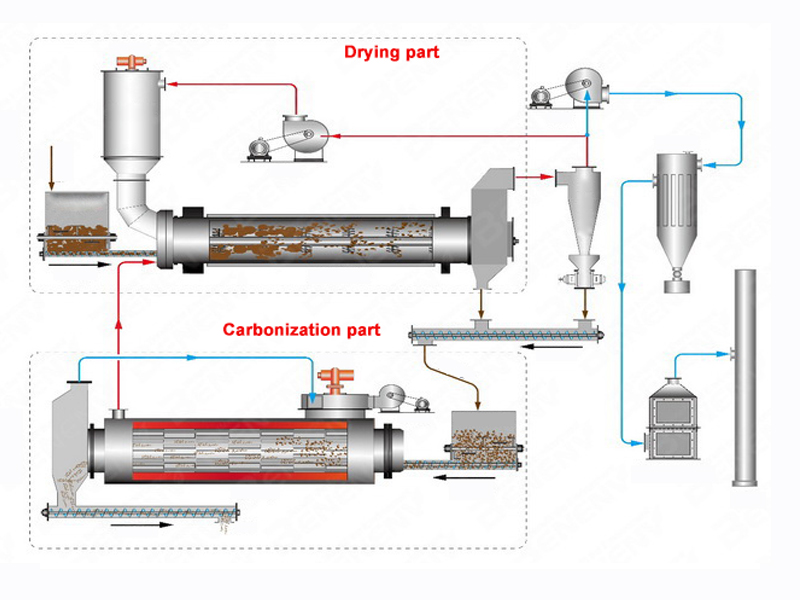The continuous carbonization furnace equipment first burns materials through the gasification furnace to produce smoke. After the smoke purification system considers gas impurities such as wood tar and oil smoke, the smoke is transported into the carbonization furnace for combustion. When a certain temperature is reached, the carbonization furnace adds materials that need to be carbonized, and through pipeline transmission, the materials are burned in the carbonization furnace. Organic combustion needs to meet three points: heat, oxygen, and organic matter, Because the inside of the carbonization furnace is almost a closed space, meeting the demand for oxygen deficiency, the materials will not burn into ash but only into charcoal after adjusting the speed of the conveying device inside the carbonization furnace at a high temperature of 800 degrees Celsius.

The flue gas generated by the materials burned in the continuous carbonization furnace is treated with flue gas purification and then returned to the carbonization furnace for combustion, allowing the machine's thermal energy to operate continuously, achieving smoke-free, environmentally friendly, and continuous effects. Finally, the carbon is transported through a cooling machine for cooling, so that the temperature when it comes out is only 50-80 degrees. During the transportation process, the carbon comes into full contact with the air. If the material has a high density and is relatively thick, although there is no open flame on the surface, there may be sparks in the core of the material, and it may also self ignite. It is necessary to install a mist like spraying device to cool the carbon produced twice, in order to completely eliminate the source of ignition.


